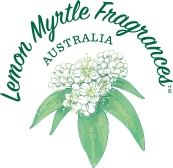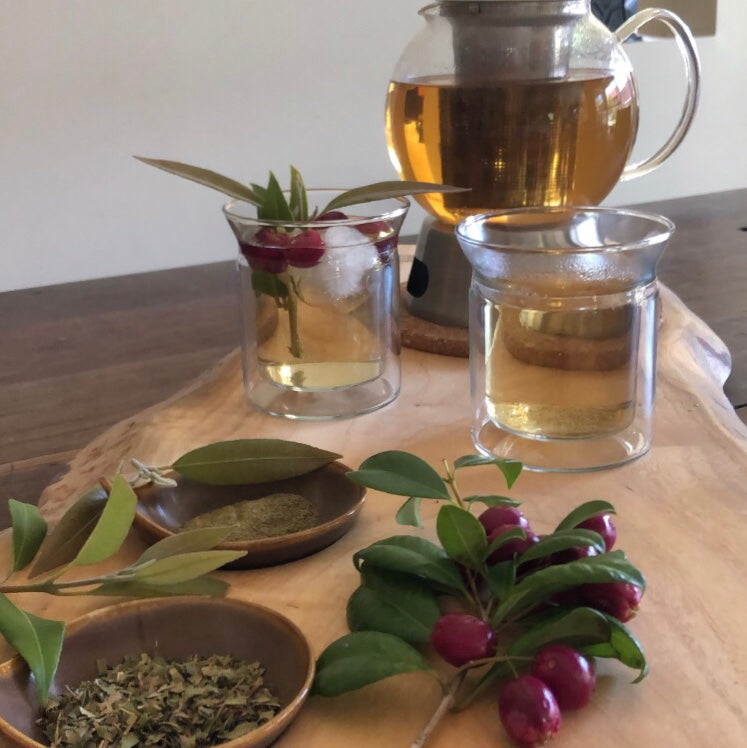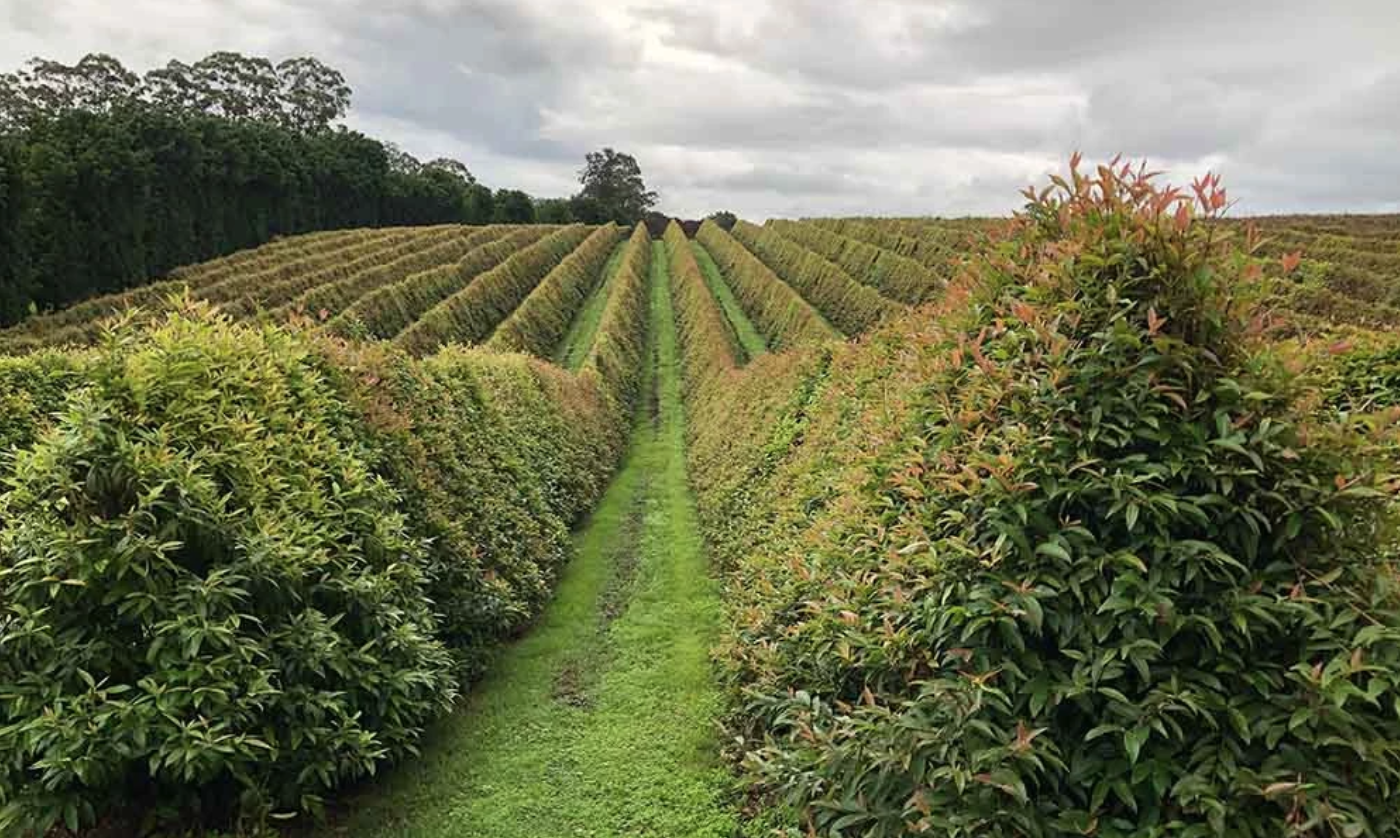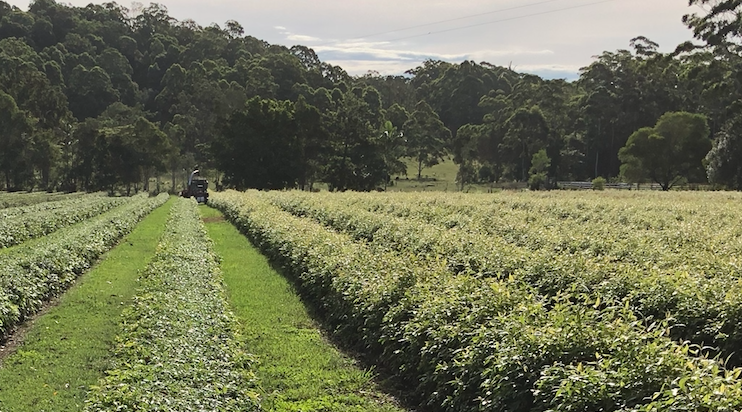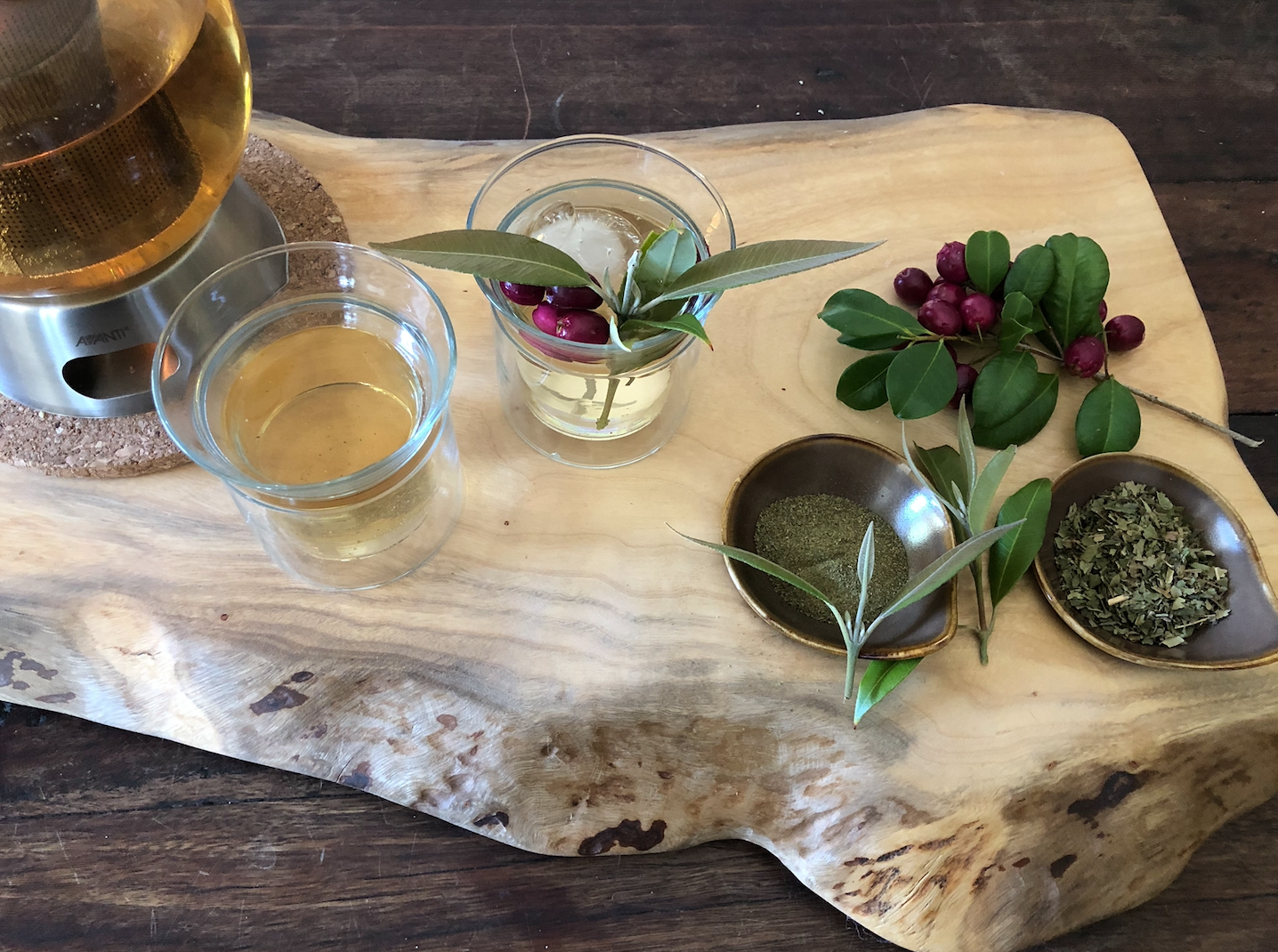Welcome to Edition 3 of Lemon Myrtle News and isn't it nice to see Spring and some more moderate weather. Save for a few chilly mornings and the polar burst this weekend, Winter appears behind us and Spring, the favourite season of many, is here.
Maybe because of the challenge of the last six months, a challenge some of you might still be enduring, or maybe just because it is Spring, it is a joy to see the burst of colour from the many fruit trees around. The promise of Summer fruit to come is uplifting and just a little reassuring that we are possibly moving ahead of COVID and, as restrictions are lifted, even if just a little at time, there appears to be a little optimism ahead.
The new growth on the Lemon Myrtle trees is also emerging from the older, larger leaves. The flush of pink, soft leaves is encouraging - pre-empting the full floral display of the Lemon Myrtle on its way.
Our Hacks and Hints for September champions the Lemon Myrtle leaf - a remarkably versatile leaf, and don't forget to read on to the end for another Lemon Myrtle recipe - Lemon Myrtle Tea with Lilli Pilly's.
Please feel free to email us with anything you would like us to share. And, if you have any questions or, if there is anything about Lemon Myrtle you would like to know more about, please email us.
What's News - Demand for Lemon Myrtle grows
Backhousia Citriodora - Lemon Myrtle
Lemon Myrtle has, for tens of thousands of years, been used by Indigenous Australians for many things. Since European settlement, the native tree's popularity across the wider community has ebbed and flowed since its potential uses were identified in the 1800's.
Backhousia citriodora was named after James Backhouse, an English botanist who travelled to Australia in the 1830’s and it was in 1853, botanist Ferdinand von Mueller named the genus after his friend.
However, since the 1990's this tree and its produce has been again gaining acceptance across the wider community. This popularity has been driven by a concerted effort of a few growers who started commercial plantations in the 1990s with a view to increasing the native food industry for both domestic and international markets.
Around the time of the Sydney Olympics in 2000, Lemon Myrtle's rediscovery was boosted due to the many international VIPs visiting the country and the need to be able to present "native Australian" cuisine inspired by the fusing of this distinctive fragrance and taste with an array of other dishes.
This focus, and indeed the continued spotlight of upcoming chefs looking to create signature dishes with a native flavour have all combined to promote the Lemon Myrtle market to its current popular status.
Additionally, research into the benefits of lemon myrtle, has identified its superior antibacterial, antifungal and antimicrobial properties - it is more highly rated than the previously well considered tea tree, though with a more gentle fragrance. These benefits are a natural fit for the personal care and cosmetic industry and hence more pressure is brought to bear on the industry.
The other emerging market for Lemon Myrtle over the past couple of years is in the beverage market. The emergence of local boutique distilleries across the country has seen the arrival of some very fine Lemon Myrtle Gins, Vodkas and Limoncellos.
However, despite all of this focus around Lemon Myrtle, none created more immediate demand for the native wonder than COVID-19. The pivoting of companies to produce Hand Sanitiser with Lemon Myrtle was truly amazing, with one supplier of Lemon Myrtle leaf converting their usual production of leaf into Lemon Myrtle Oil. The leaf is usually 95% of their business with 5% to Oil production.
As that immediacy has dissipated, it remains to be seen whether the "flavour of the month" will continue its meteoric rise.
Hacks & Hints
We are constantly amazed at the inventiveness of our customers and the ways they use some of our products to extend their use and drive further value for money. Many of these customers are happy to share these Hacks & Hints with us, so, we in turn want to share them with you, after all, getting value for money is always important - but it just seems even more important right now.
Each month, we will select a product from our range and share some of the Hacks & Hints we've heard about, so you can also reap the rewards identified by the Lemon Myrtle Fragrances community.
And, if you have any Hacks or Hints you would like to share with the wider community, please don't hesitate to email us at info@lemonmyrtlefragrances.com.au.
September Highlight - Lemon Myrtle Leaf
Hacks
- Lemon Myrtle leaves can be used when picked directly from the tree, they can be dried and crushed or put into a food processor, the dried leaf can be cut down into a fine powder.
- If you have access to fresh leaves to dry, use an oven at a very low heat and open the door a little. Dry within a hour of picking to ensure the flavour is retained
- Lemon Myrtle leaf can also be added to our Lemon Myrtle Fragrances Body & Hand Wash - along with a little coarse sea salt for a nice exfoliating scrub
- ground down into a powder - either in a food processor, coffee grinder or mortar and pestle, this "now" spice can be used in sweet and savoury dishes - anywhere you would use lemongrass or lemon
Hints
- Absorb the benefits of Lemon Myrtle by infusing fresh lemon myrtle leaves to a water bottle - you have a refreshing drink with the benefits of Vitamin A, E, zinc, magnesium, calcium, lutein and antioxidants - (lutein is a carotenoid which is excellent for eye health, particularly age related macular degeneration
- Lemon Myrtle leaf, when dried can be cut to a smaller size and used in the crumb or rub for many different dishes - chicken, lamb, fish
- Use the tea or fresh leaves to infuse in milk when making a custard or cheesecake
- Lemon Myrtle tea is caffeine free - so it makes a very calming night time tea
- When cooking rice, put some of the tea leaves or fresh leaves in with the rice for a flavourful lemon myrtle rice
Recipes - Lemon Myrtle Tea with Lilli Pilly's
Lemon Myrtle Tea with Lilli Pilli's
Growing up in the early sixties, our street was lined with Lilli Pilly trees. We loved those trees, we'd climb them and play for ages and we used those trees to measure how we were growing. We would regularly run, jump and hop to see how many jumps it took in between the trees, compared to our Grandpa who, at nearly 2m tall, seemed to us like a giant.
The best thing was though, the fruit - we couldn't believe how lucky we were to have this endless supply of these small purple berries at our fingertips. But before too long, every one of those trees was cut down by the council because the falling fruit created slip hazards - what a terrible shame and that street never seemed the same again.
Now it is wonderful to see these natives growing in popularity again. They work so well with so many things, most particularly, Lemon Myrtle.
Lemon Myrtle tea can be drunk hot, cold or as iced tea. To make a pot of tea, add one teaspoon of Lemon Myrtle tea per person to the pot and add water, stir the leaf and then allow to steep for 4-5 minutes. Pour the tea into the cup and add a couple of crushed Lilli Pilly's into the cup.
This tea is just as nice cold as it is hot, and with some ice cubes added, it make a very refreshing iced tea. You can substitute the Lilli Pillys for strawberries, riberries, finger limes, ginger or any fruit to your taste.
Depending on personal taste, you can add more or less Lemon Myrtle leaf to your brew, you can also mix it with black tea, green tea or any tea of your choosing.
